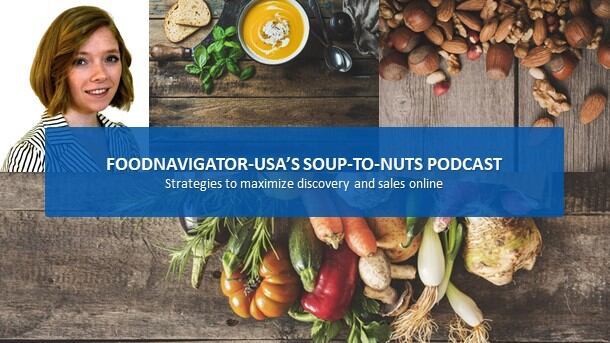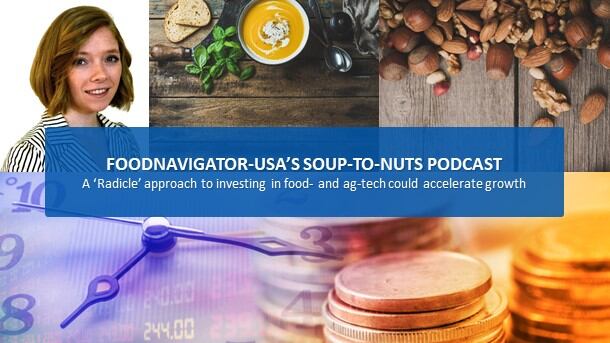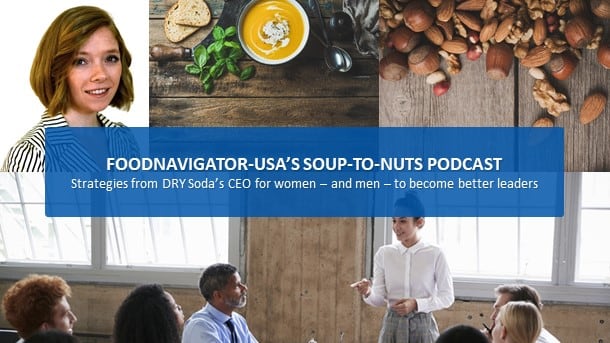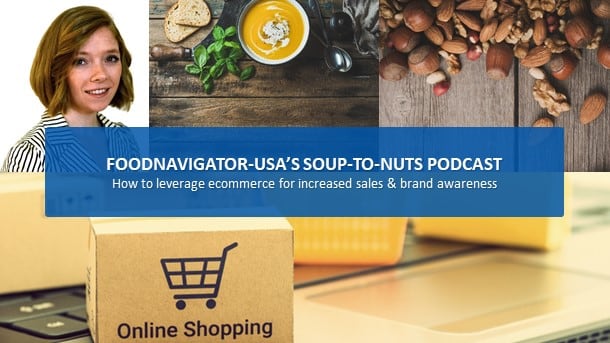But giving ecommerce a pass would be a huge mistake, given how quickly the channel is growing for food and beverage and how influential it is for sales across channels, according to Stephanie Leffler, who is the co-founder and CEO of OneSpace, which helps position CPG brands on the digital shelf.
At the Digital Food & Beverage Summit in Austin, Texas, last week, Leffler pointed out that even if consumers aren’t buying as many groceries online now as they are in stores, the Food Marketing Institute predicts in five to seven years, up to 70% of US consumers will regularly grocery shop online. And even when they don’t buy groceries online, they often turn to the Internet to learn about products or to build their shopping lists and carts.
With this in mind, Leffler said, grocery brands must ensure their products not only are available online, but also easy to discover – an attribute that can be difficult to achieve without a clear strategy that takes into account consumer behavior online and the different characteristics of the host retailers.
In this episode of FoodNavigator-USA’s Soup-To-Nuts Podcast, Leffler walks us through these issues and shares advice on how to maximize discovery by leveraging images, search filters, enhanced content and consumer reviews.
Ecommerce isn’t just about online sales
Online sales of food and beverage trail far behind other categories for many reasons, but according to Leffler the space is changing dramatically – making ecommerce a channel that manufacturers – and retailers – in the space can’t ignore.
“The key message there is that it is not just about ecommerce entering the scene, but it is the options that … consumers have about where they procure goods or how they procure goods in general,” Leffler said.
She acknowledged that when it comes to food and beverage most consumers want them quickly and it can be “pretty expensive to ship these things, so there is a big reason why we are behind.”
But she added, “the flywheel is spinning at this point” and more retailers and apps are making fast delivery possible and less expensive.
As such, she said, consumers increasingly are turning to the digital shelf to discover new products – even if they don’t buy them online, they are reading reviews and building their shopping lists. So, if a brand isn’t there, they are less likely to be added to the cart – whether physical or digital, she said.
Consumers’ discovery process online starts with the search bar
For brands that started out in brick and mortar, the move to online can be a challenge because many of the rules for enticing consumers in stores don’t apply online and the path for discovery is very different.
In stores, brands could pay for prime positioning at eye level or as part of end-cap displays to catch consumers’ attention, but in the digital world consumers are less likely to meander from page to page the same way they might walk from aisle to aisle. Instead, they often start their journey at the search bar, which is also where Leffler says brand marketers need to begin.
“If you think of search as the ultimate discovery platform, what we see on Kroger is that 80% of the searches conducted there don’t have a brand in them. So, people are searching for light roasted coffee, for instance, and all of a sudden they get lots of products that match their search” that they can choose from, Leffler said.
Whereas in a physical store, Leffler said, consumers are more likely to look first for a brand they know and then look for the attributes – making it less likely they will try something new.
With this in mind, Leffler says the most important way brands can maximize consumer discovery is by understanding how they search for products and how ecommerce platforms direct them. This includes knowing and using on the product description page the most frequent search terms that consumers use as well as if retailers auto-fill in searches, which would aggregate results.
There are many tools that can help brands identify these terms, including two products from OneSpace. One pulls the information from 19 different retailers, including nine grocery stores, and puts them in an easy to use dashboard. The other software products helps CPG food and beverage companies optimize their products for each retailers’ unique digital shelf and helps them understand what is important and how to drive discovery, Leffler said.
Your Amazon page is not a proxy for other online retailers
When it comes to maximizing the search feature on different ecommerce sites, Leffler says manufacturers need to realize that not all online retailers approach search the same way – which means they can’t apply the same blanket approach to all of them.
“For some reason, people assume that when someone types in a search bar they are going to type the same things in every retailer search bar, but what we see is there ae a couple of key things that tell us that is not true,” Leffler said.
She explained, for example, users are more likely to search for specific products on Amazon but use generic search terms like “healthy snacks” on Walmart’s website.
Plus, she reiterated, that each site has its own auto-fill searchers and brands need to use those words on their product page in order to come up in search results.
Refining your product information page
While each retailer’s search function may be slightly different, a common element among all of them is how they base their results on manufacturers’ product information pages – making these a critical focal point for brands, according to Leffler.
The most important element of the product detail page is the title, followed by the bullet points, which should be filled with key words while also describing the product in detail, Leffler said. She added that this isn’t the place to sell a product, but rather to really communicate the nitty gritty about what it is.
A pivotal component of the product detail page that is often overlooked by brands is the enhanced content that appears “below the fold.” Leffler explains that this information is important because even though it appears farther down on the page on a computer, some retailers actually put it at the top of the page when a consumer is using their phone.
Optimize the photo carousel
Another key feature of the product detail page that heavily influences consumers is the photo carousel, which Leffler says is where brands recreate the in-store experience of shoppers picking up their product to inspect the packaging.
“The biggest thing is you want to match the instore experience. So one of the things you can do is look at the product packaging, and anything that is important about that item that is pulled out in a burst or called out on the product packaging, that is a really good thing to give its own image,” she said.
She also recommended using 3D renderings of the packages rather than actual photos so they appear cleaner and better communicate what is inside the package – for example, if it is a 12-pack of beverages showing that they are in cans or bottles.
Lifestyle imagery is not as effective in the image carousel unless it is paired with text that describes what people are looking at and why it is important, Leffler added.
Apply filters
The filters that many online retailers allow consumers to use to refine their searches also can heavily impact a brand’s or product’s “discoverability,” according to Leffler.
She explains that every retailer handles navigation filters differently, but it is worth the extra work because most modern consumers follow specialty diets and use the filters to tailor their search results.
Let consumers be your ambassadors
Once brands have their product detail pages in order and maximized for each retailers’ different search features, Leffler recommends they turn their attention to consumer reviews, which she says hold a lot of weight among shoppers.
“Reviews and the quantities of reviews is something that consumers absolutely look at to gain confidence in the purchase they are about to make. I think it can close the deal or it can lose the deal for you, so paying attention to those is very important,” she said.
She also encouraged brands to read reviews because they are full of questions and insights about a product that can help companies better understand how consumers are using the goods and how to optimize their descriptions for future search results.
While all of this is a lot to keep track of, Leffler says the main message that she wants brands to hear about online shopping is that it has completely changed how consumers interact with products. She explained the quantity and quality of information at shoppers’ finger tips has empowered them to pull from food and beverage companies in a way that previously was not available. This means that marketers can’t simply push products, instead they need to engage with consumers to identify their needs and how their products can meet those needs.




